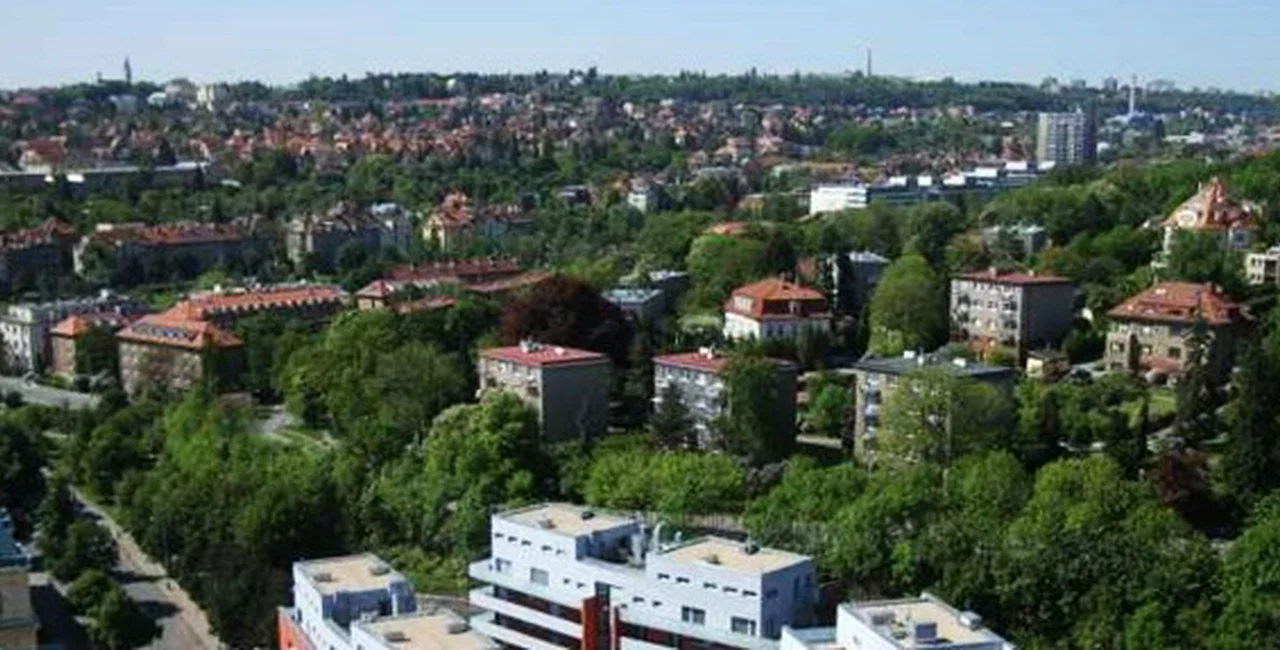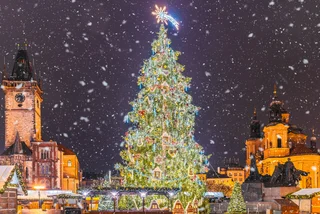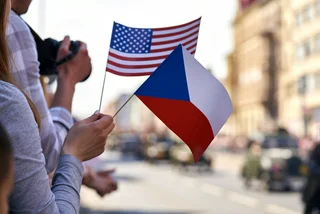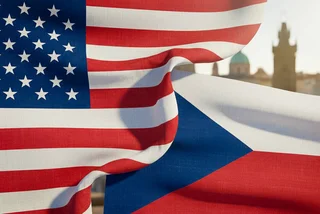Along with Vinohrady, Dejvice is the quintessential Prague expat quarter, the kind of area that makes estate agents and relocation consultants rub their hands with glee as they think of the business opportunities. Although not as old as the other neighborhoods we´ve looked at in this series, this solidly bourgeois district has a long-established feel, and among other things, offers very attractive housing, international schools, a clutch of decent restaurants, and plenty of green space. It´s therefore no surprise that Dejvice has become one of Prague´s most cosmopolitan districts.
PARTNER ARTICLE

Location
Thanks to its location en route to Prague airport, Dejvice is easy to locate on the physical or mental map. It lies immediately northwest of Hradčany and west of Letná, and extends north towards Suchdol and west towards Střešovice and Břevnov. The heart of Dejvice is Vítězné náměstí (Victory Square), which is informally and more usually known as “Kulat´ák”. Evropská, one of Dejvice´s main thoroughfares, leads from Vítězné náměstí to the airport.
History
Surprising as it may seem, most of Dejvice has been in existence for less than 90 years: it grew up thanks to the building boom generated by the fledgling Czechoslovakia in the early 1920s. The confident and optimistic new democracy required the trappings of statehood, such as public institutions, which resulted, for example, in the army headquarters on Vítězné náměstí. At the same time, the bourgeoisie running the new state needed somewhere to live, and its members moved into the solid, dignified apartment blocks built in the streets around Vítězné náměstí. They also took up residence in the new upscale residential districts that began to develop, most notably the minimalist modernist Baba development, and the more traditional but no less striking Ořechovka.
Like much of Prague, Dejvice emerged through the Second War relatively unscathed, at least in physical terms, and under Communism the neighborhood fared not too badly, although ugly concrete structures like the Hotel Praha, where the likes of Mikhail Gorbachev and Colonel Gaddafi spent nights in the Cold War days, did their best to spoil the atmosphere of the area.
After 1989, Dejvice once again became one of Prague´s most desirable areas, sought after by locals and expats alike. It never fails to appeal to househunters thanks to a combination of excellent housing, accessibility and good services. The hilly topography and superb views over Prague also win plenty of expat votes.

Getting there and around
The fastest and most convenient way to reach Dejvice is by metro – the western terminus of line A (Dejvická, oddly enough), is at Vítězné náměstí, which is one of Prague‘s main transport hubs, as the metro is connected with the many tram and bus routes that converge on the square. At the time of writing, large sections of the tram network are not operating due to extension of route number 8 and metro construction at Červený vrch. However, under normal circumstances, routes 2, 8, 20 and 26 run via Vítězné náměstí and connect with Dejvická metro station. Numbers 2, 20 and 26 run to Divoká Šárka, and the route of number 8 will be extended to terminus in Podbaba when work finishes in a few months. For up to date information see www.dpp.cz.
Suburban bus routes (indicated by a “300“ number) depart from the stops around Jugoslavských partyzánů; regional buses to destinations such as Kladno and beyond leave from Evropská, opposite the Hotel Diplomat.
Environment
Dejvice is one of Prague´s best areas in terms of greenery, clean air and peace and quiet, especially in the hillier areas such as Hanspaulka. However, residents living in the more built up parts of Dejvice, and those living on the main highways face problems of traffic and exhaust emissions, etc. Other issues are the same as elsewhere, such as dog fouling, a perennial nuisance in Prague, and uncleared snow in winter.
Green space
Dejvice has access to some of the best and most expenive green space in Prague. Top of the list is Divoká Šárka, a favorite spot among Praguers, particularly in the spring and summer. Soon the bustle and noise of Evropská disappears as you are suddenly transported from a European capital to the great outdoors.
The Šárka stream begins its short life here, amidst jagged black cliffs and crags that gradually give way to less dramatic surroundings, and eventually joins the Vltava north of Podbaba. When the weather is good Šárka valley attracts many bikers, hikers and swimmers, the latter being lured by the small outdoor pool further down the route, or the rather more dubious Džbán reservoir (Vodní nádrž Džbán).
There is plenty of other green space in Prague 6, and while not strictly speaking in the neighborhood, the park at Stromovka is within easy reach of parts of Dejvice, as is Letná.
Housing
Dejvice contains some of the best and most expensive addresses in Prague, indeed some of the most well-known residential architecture in the country. Although it is often regarded as a villa quarter, tenement flats make up much of the housing stock in Dejvice. In both cases, building quality is usually high and properties are generally spacious. Inevitably, most of the houses and flats date from the interwar period.
Housing in Dejvice can be divided roughly into three zones. The eastern part of the district, from the area around Bubeneč railroad station to the streets west of the Sparta football stadium, consists mainly of large villas of varying periods, such as the turn of the century houses on Slavíčkova. The central area, around Vítezně náměstí, is denser and less green, and made up of geometrically laid out blocks of tenements. Westwards, from Bába in the north to Hanspaulka and Střešovice, the district returns to low density as villas predominate, with sporadic outbreaks of panel housing. This part of Dejvice includes the two architecturally signficant sub-districts: Bába and Ořechovka. The former is a series of box-like Functionalist white villas perched on a cliff high above the River; the latter is a classic slice of British Home Counties suburbia that has been teleported to Prague.
Inevitably, house prices in Dejvice are among the highest in the country, and flats and houses sell consistently well. Renovated 3+1 flats reach an average of CZK 6,000,000, and 4+1 apartments an average of CZK 8,000,000. In terms of houses, Dejvice specialises in luxurious detached villas from the pre-war era, usually with 6 or more rooms and large gardens. Most have been renovated, and prices of CZK 30,000,000 are common; pre-war villas in the most prestigious parts of Prague 6, such as Ořechovka, can reach up to CZK 100,000,000.
SUMMARY
Strengths:
- Good quality housing stock
- Access to international schools
- Excellent public transport links
- Very good location for families with children
- Attractive green spaces
Weaknesses:
- Lack of affordable housing
- Lack of off-street parking in some areas
- Lack of large supermarkets
***
OTHER PRAGUE DISTRICTS:












 Reading time: 6 minutes
Reading time: 6 minutes 



















